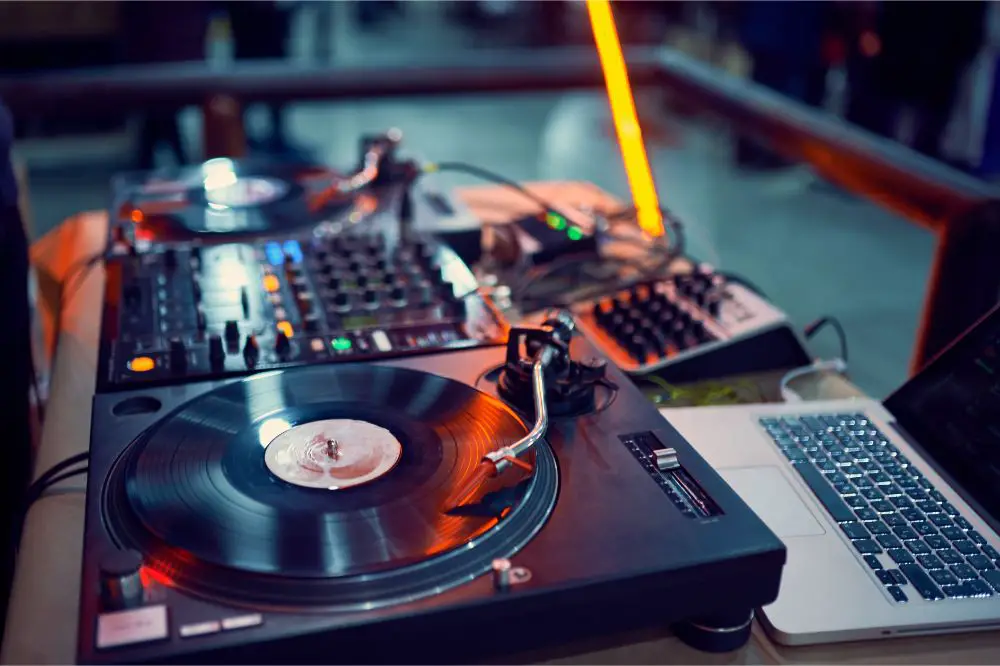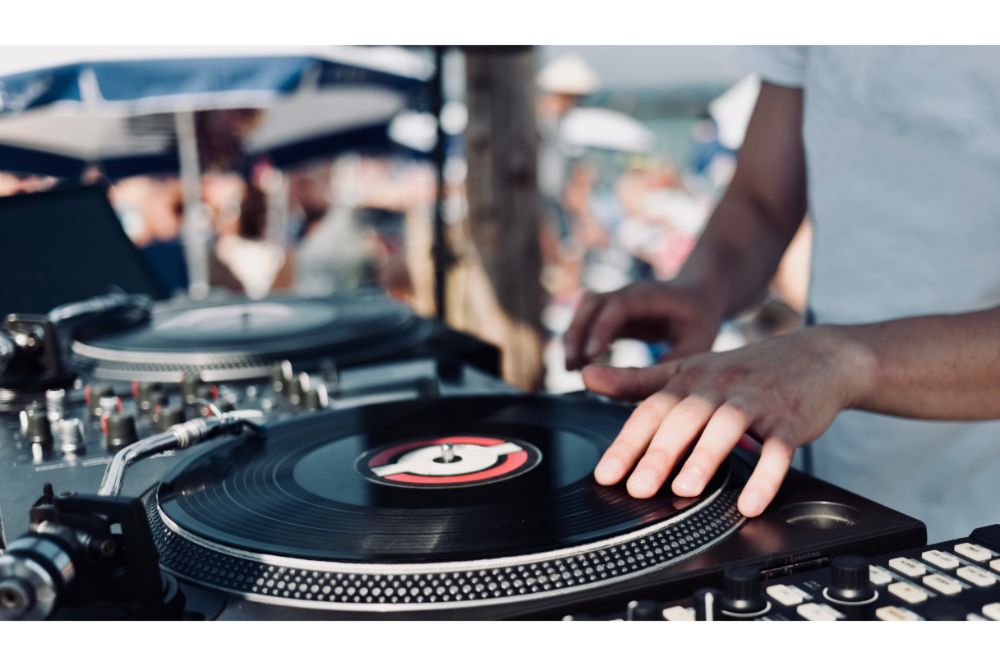There’s one simple truth about DJing – it’s easy! Nowadays, anyone can become a digital turntable DJ using mixing software and a decent laptop. Moreover, it doesn’t require much upfront expense, making it one of the more accessible hobbies to get into.
However, DJing does pose a challenge sometimes. Finding a DJ table with turntables can feel like an impossible task, and there seems to be a shortage of resources on how to use these DJ tools.
If you want to learn how to use DJ turntables, then you’ve come to the right place. Read on for our full guide on DJ turntables.
Torque and Motor
A turntable’s torque refers to the turning power of its platter. This turning power depends on the efficiency and strength of the motor that’s attached to it.
Belt-drive motors are linked to the platter indirectly using a belt – hence the name! They perform with lower torque than their direct drive motor counterparts.
Direct drive turntables will generally cost you more, though they are preferred for professional and demanding gigs. Belt-drive turntables often come with additional features and they are generally better for getting started in DJing, thanks to their low price points.
Tone Arm and Platter
Perhaps the most notable moving part of any turntable is the tonearm and platter. These parts have historically been quite essential when it comes to the playback of music. As mentioned above, the platter is driven by a motor – either directly or indirectly – and makes up the bulk of the turntable’s surface.
This platter is where vinyl records are placed and rotated at a constant speed. While this happens, a cartridge, which is attached to the table’s tonearm, moves across the surface of the vinyl to read the music and play it back. There is a range of cartridge types available, each one suiting the preference and styles of different DJs. They also produce different sound quality, though the exact differences in sound quality are negligible to untrained ears.
Turntable Construction
One of the key features of any piece of musical equipment is its construction and build quality. You’ll find many differences in the quality of a turntable’s construction based on its price range.
As a beginner DJ, your main goal is to isolate ambient noise and unwanted vibrations as much as possible. The easiest way to do this is to use a heavier turntable, which you can determine by the materials used to make the turntable.
Using a clever combination of synthetic materials, rubber, and metal, turntable manufacturers can further improve the dampening effect of their machines. Some of the most durable DJ turntables feature metal surfaces, which are coated with a scratch-resistant finish.
An extremely well-built turntable will not only have a metal surface but will be heavy. This weight is part of a series of anti-resonance/dampening design features that aim to improve the sound quality as much as possible.
Scratching
Scratching is one of the best skills that you can have when you’re starting as a DJ, and it’s a technique that is a staple for anyone operating a direct drive turntable. It often comes as one of the additional features on CDJ tables, but there’s just nothing like being able to perform a manual scratch.
This technique not only helps add some flair to your set but can also teach you more about correctly queuing up mixes. Experimenting with this industry-standard technique is often a unique sound you can record and save for use later.
Of course, learning how to scratch properly takes practice, time, and patience. If you aren’t experienced with scratching, you will need to be persistent in learning. This is particularly true when it comes to using cheaper turntables since they make it more difficult to execute good scratches.
In addition to having the turntables, you will need to build your collection of vinyl records. Scratches are created using vinyl records, and while digital systems allow you to scratch a ‘digital vinyl,’ it’s really not the same.

Building a Memorable Set
One of the key features of any good DJ is having an amazing set. Since the rise of digital music, modern digital DJs don’t have to work very hard to make excellent playlists. Plenty of online blogs have lists upon lists of top tracks in the form of digital music files – find one, hit the download button, and you’ll have hundreds of songs at your disposal.
Of course, finding tracks that people haven’t already heard can be quite difficult. But if you’re able to pull it off, you’ll be able to make your sets truly stand out. Also, ensure that your set’s audio quality is as good as possible. There’s nothing that club-goers want less than bad audio quality.
Additional Equipment
While turntables and a mixer are two of the essentials that you need as a DJ, there is one other core feature that you’re going to need in order to be a successful turntable DJ: a way to hear the music. Speakers will allow your audience to hear the tunes, while headphones will bring you up close and personal with it.
The Importance of Headphones
If you plan to play exclusively in clubs and venues that already have speakers, you don’t have to worry about getting speakers of your own. However, you will need to invest in a good set of headphones either way.
Your headphones are a core feature of your DJ setup, as they will allow you to cue the next track up. You’ll be able to hear the next track while the current one is still playing, allowing you to sync them up.
We suggest investing in a high-end pair of headphones. They’re available in various styles and sizes, many of which come with cool features like noise-canceling and Bluetooth connectivity.
What Makes a Good Pair of Headphones?
Good isolation is one of the most important features of any good pair of DJing headphones. When you are DJing, your set will play through loudspeakers. So, if you want to be able to create smooth transitions from one track to the next, you’ll have to be able to hear the next song.
If your headphones don’t have good isolation, you will not be able to hear anything. Professional DJs usually opt for closed-back headphones, as well as ones that are capable of high output.
Comfort is also an important factor here since you’ll likely be wearing your headphones for the duration of your set. Other features to consider are power cables, whether your headphones are wireless or have to be connected with a USB cable, and whether they are cushioned. USB cable headphones – or just headphones that require power cables – are less favorable, as they tend to limit your range of movement when you have them on.
Final Thoughts
As you can see from above, you don’t need turntables to DJ. But there is something really cool about kicking it old school with retro turntables with your DJ setup. If you do decide to use turntables to DJ, follow the tips and guidance we provided above to ensure you have all the gear and information you need to have the best experience possible.

